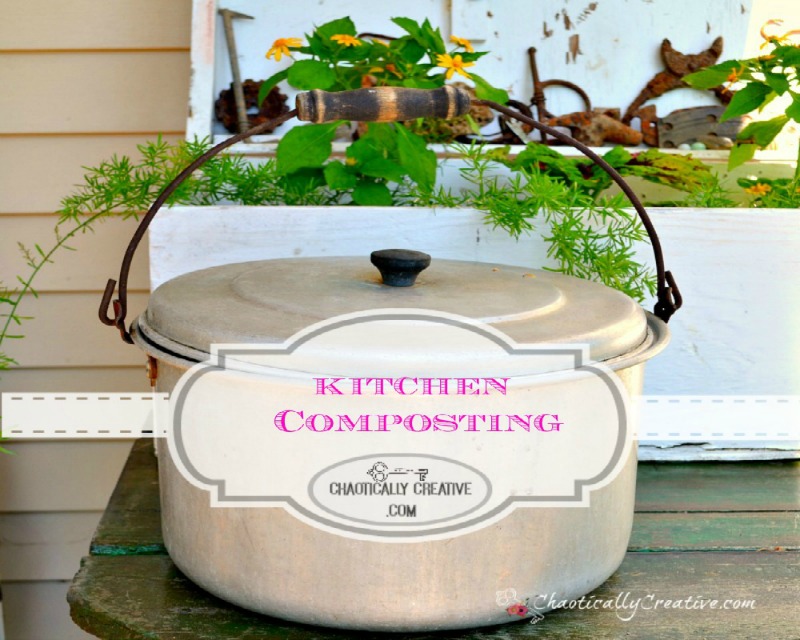 Hey! Remember the What’s In The Pot Contest that we featured on Planting a Back Yard Garden? Yep, kitchen composting material is in the pot! I found this old aluminum pot at a thrift store and it is perfect for tossing in my kitchen stuff. We promised you a post on Kitchen Composting for Beginners. So here we go, prepare for some yuck…
Hey! Remember the What’s In The Pot Contest that we featured on Planting a Back Yard Garden? Yep, kitchen composting material is in the pot! I found this old aluminum pot at a thrift store and it is perfect for tossing in my kitchen stuff. We promised you a post on Kitchen Composting for Beginners. So here we go, prepare for some yuck…
 What we call “scraps” from produce, vegetables, peels, fruit and crushed eggs shells is in the pot. You can throw in everything except meat, fat, dairy and fish to add to your compost bin or pile.
What we call “scraps” from produce, vegetables, peels, fruit and crushed eggs shells is in the pot. You can throw in everything except meat, fat, dairy and fish to add to your compost bin or pile.
Now, some people do just kitchen scrap composting by digging a hole in the ground and letting the food compost in the hole.
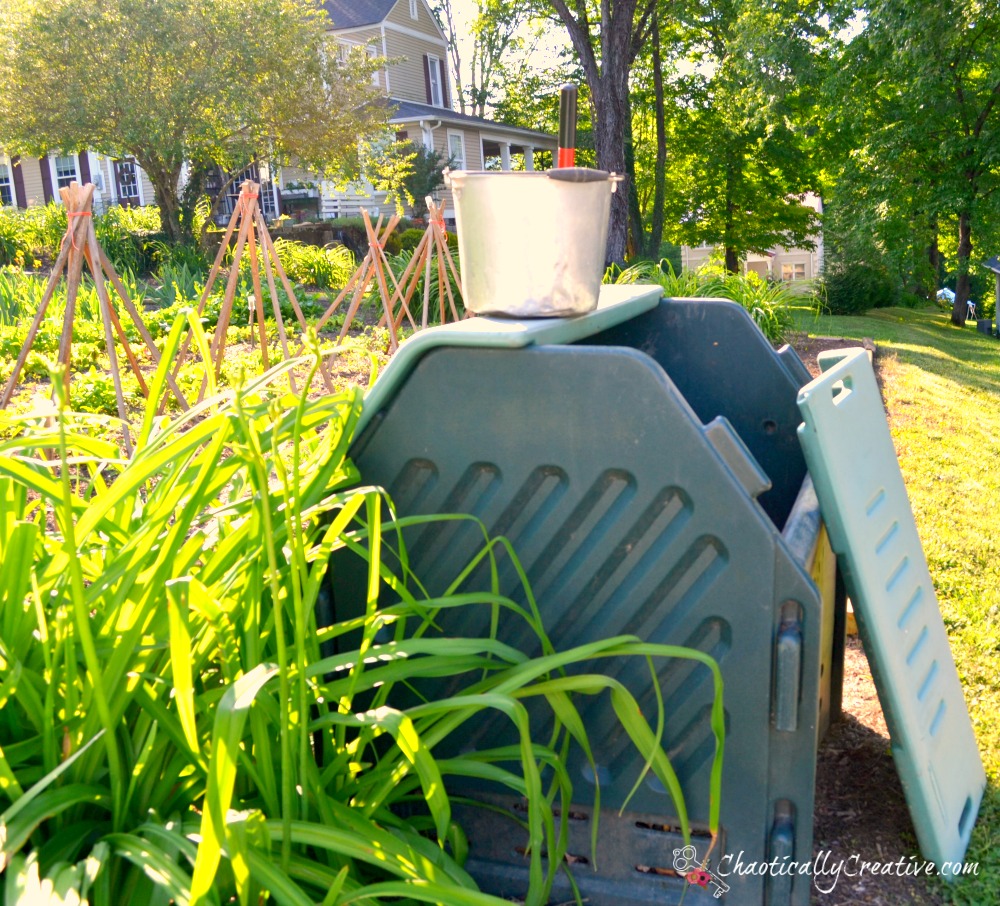 I do a combination of kitchen scraps, brown and green materials from the yard in a plastic compost bin that I have had for years. There are many many types out there to choose from and you can also just make a pile on the ground and cover with plastic if you do not want to invest in a bin.
I do a combination of kitchen scraps, brown and green materials from the yard in a plastic compost bin that I have had for years. There are many many types out there to choose from and you can also just make a pile on the ground and cover with plastic if you do not want to invest in a bin.
In order to create compost you need the proper mix of materials, moisture and fresh air. It is also advisable to “turn” or stir the materials to promote healthly decomposition. I, however, am not the best at remembering and finding the time to do that. There are bins out there that turn with a handle. Mine is not that fancy.
Why compost? It is simply wonderful for planting a back yard garden! It amends the soil better than anything you can buy. Once a bin is ready, I just take it apart and spread the compost pile right in the same area. The I relocate the bin to another spot in the garden.
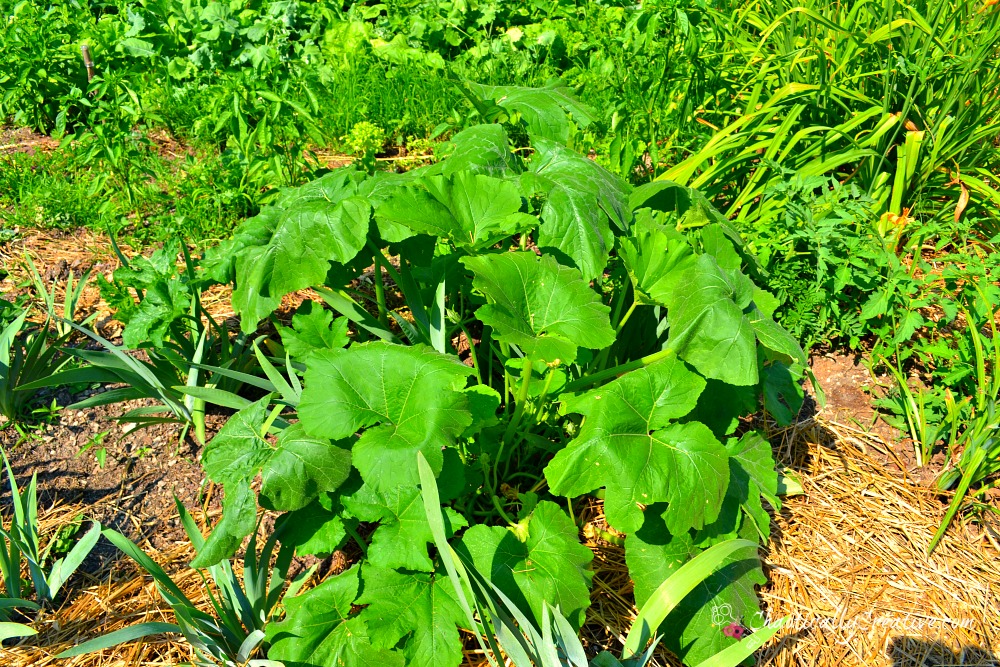 In fact, I have plants growing out of my last compost pile that I emptied this spring, such as this huge
In fact, I have plants growing out of my last compost pile that I emptied this spring, such as this huge Zucchini plant! Pumpkin Vine!
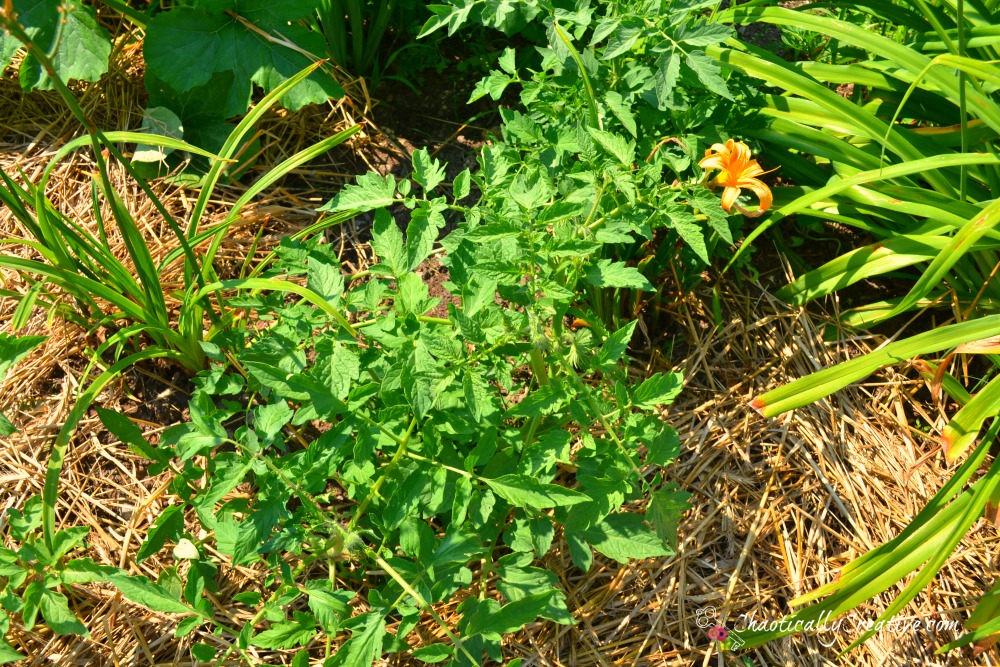 And I have this heirloom tomato plant that just popped up. What an added bonus! I also had a lot of watermelon plants come up from this pile which I pulled, because I just don’t have the room for watermelons this year. I did leave a couple though.
And I have this heirloom tomato plant that just popped up. What an added bonus! I also had a lot of watermelon plants come up from this pile which I pulled, because I just don’t have the room for watermelons this year. I did leave a couple though.
There are zillions of articles/books on the web about composting. Some are quite complex and technical and frankly just take too long to read. like to keep my method simple, basic and common sense.
Let’s talk materials…
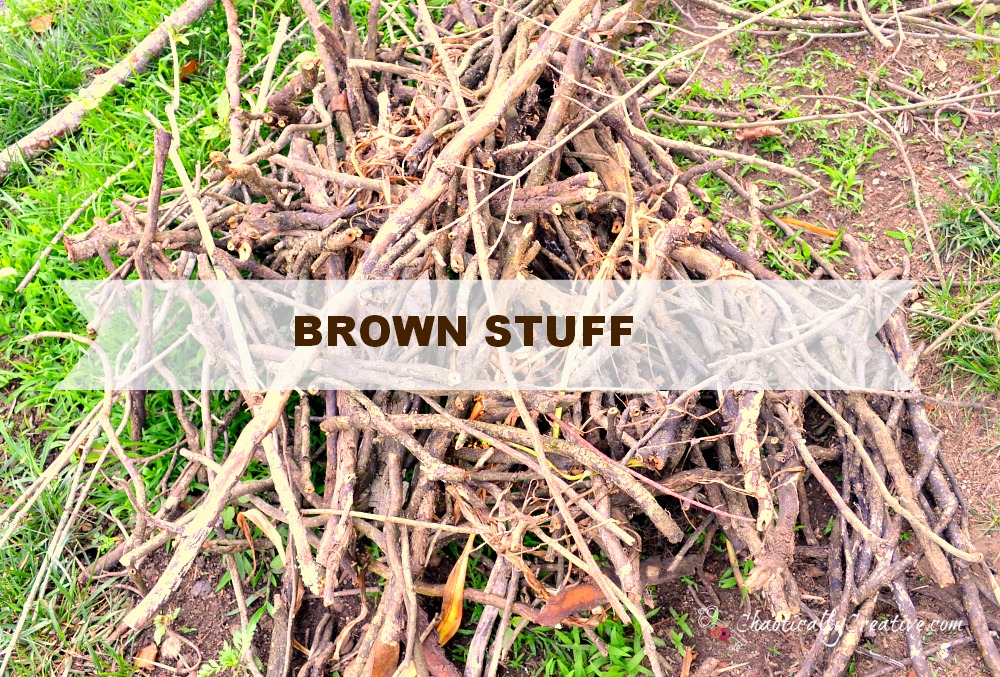 Here we have the Brown Stuff, which is basically chopped up sticks, twigs, stalks and vines. As for me and my sticks,which are abundant, I run over the small ones with my mulching lawn mower and they get mixed in with the grass clippings.
Here we have the Brown Stuff, which is basically chopped up sticks, twigs, stalks and vines. As for me and my sticks,which are abundant, I run over the small ones with my mulching lawn mower and they get mixed in with the grass clippings.
Brown Stuff is the necessary carbon energy needed for compost. Without enough brown stuff your compost will smell rotten instead of earthy. So, if you compost is smelly telly add some more brown. Simple!
Other brown stuff (some of which is new to me) :
- Autumn Leaves: I chopped these up with my handy dandy mulching mower.
- Sawdust and/or shavings in small amounts
- Shredded paper, cardboard paper towels, napkins and tissues! THIS IS EXCITING NEWS TO ME! Now I am going to invest in a shredder to contribute to my compost pile and think of all those paper towels from the kitchen I can toss right into the pot and the toilet paper rolls, WOW!
- Dryer Lint REALLY?
- Wood Ash in small amounts
Green stuff contains the nitrogen and protein needed to compost. This is the stuff that breaks down quickly and heats up the situation in the compost bin. The best way to do it is in layers of brown and green.
Green Stuff includes:
- Kitchen produce scraps and egg shells
- Leftover produce from the garden like greens or lettuce that becomes bitter when the temperature gets hot
- Grass Clippings (of course, do not use chemicals such as weed and feed or bug spray and add these clippings to your nice organic compost. BAD BAD)
- Coffee Grounds, filters and tea bags. We don’t drink coffee, but Starbucks puts out bags of coffee ground for free inside their store!
- Composted manure from cows, sheep, chicken and rabbits. I’ve have not done this before mainly because I do not own any of these animals, but buying a bag of organic composted manure seems like a good idea.
- Hair. I had forgotten about this one. I used to spread dog/cat hair from grooming in my garden to deter other animals. I shall see how this works on the bunny who is eating my strawberries. Smile.
Another I add from time to time is dirt. This rich dirt was dug up under the patio stones when Spiffing Up the Patio. Rather than throwing it out, it made a great addition to the compost bin.
Technically speaking you should add 25 to 30 parts brown stuff to 1 part green. Simple speaking, add a lot more brown than green, but not so much brown that it takes forever to rot and compost. You also need to water your compost every other day or so.
We would LOVE to hear from all you COMPOSTERS OUT THERE! What are YOUR tips and tricks?
Until next time, we are Calming The Chaos of Kitchen and Yard Litter by putting it to work in the garden!
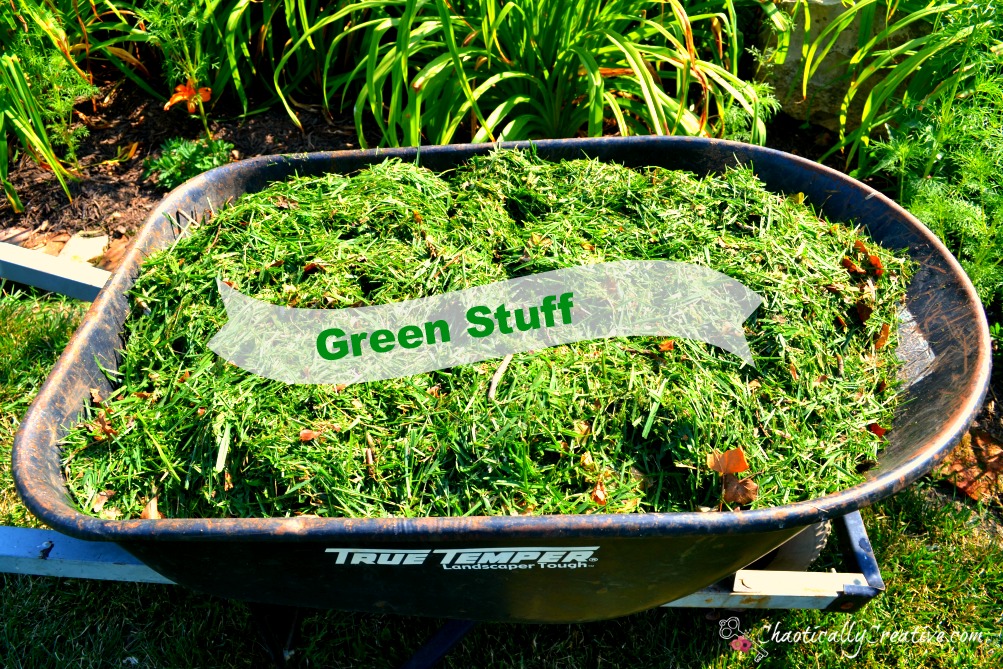
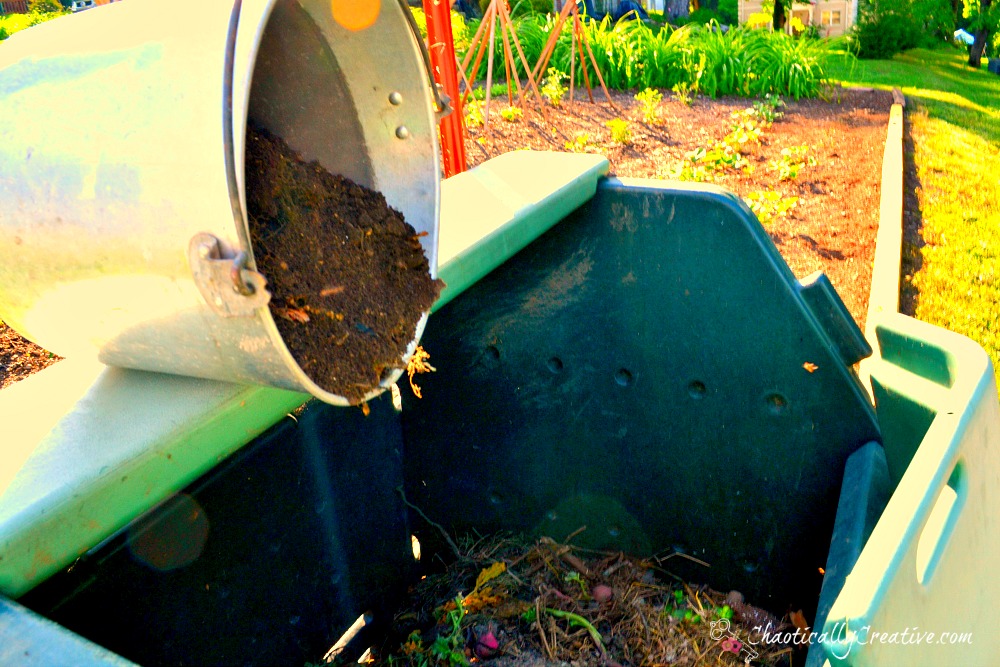
This was really interesting, Denise! I learned something new!
Thanks Kristi!
Love the compost surprises!